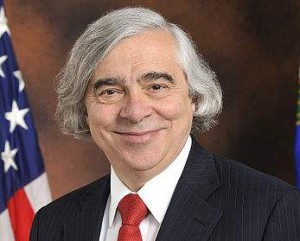
No end is yet in sight for the negotiations on a nuclear agreement, but the framework that is emerging is actually different from that which the Republicans in Congress have been attacking.
What is being negotiated is far more nuanced than the few stark points the critics have picked up—and picked on.
For example, much criticism has focused on the assertion that the agreement would end in 10 years and Iran would be free to do whatever it wished after that.
But, as described by US negotiators, the restrictions would begin to phase out at the 10-year mark but some would continue to the 15-year mark. That may still not be long enough—but it is half again as long as the time the critics have focused on.
. . . nuclear mavens brought into talks
The New York Times said Saturday that the Obama Administration is betting that by the time the restrictions on Iran have ended, “a different, or at least more cooperative, Iranian regime will be in power.” If it makes that argument in public, however, it is likely to see the number of critics grow and the belief that the administration is naive to flourish.
A key element in any agreement that is largely ignored is that strict inspection systems are to continue even after the restrictions on Iran’s nuclear program end. That is seen as a key to detecting if Iran is going for a bomb. But the details of the new inspection system are not yet agreed on.
A key issue in any debate on any deal is likely to be just how strict those inspections are. The United States is understood to be insisting that inspectors from the International Atomic Energy Agency (IAEA) be authorized to visit any site, including on Iranian military bases. Iran’s negotiators won’t agree to that presumably because the Pasdaran are adamantly opposed to that. Only the Supreme Leader can change that position.
The New York Times says Iran has agreed to ship most of its enriched uranium out of the country so it would not ever have a large enough stock of enriched uranium on hand with which to make bombs. That has been a key US demand from the start. Iran signaled agreement to that just days ago when it signed an agreement with Russia to cooperate on making fuel for the Bushehr reactor. It appears the cover for the deal is that Iran would not be kowtowing to Washington by shipping enriched uranium out of Iran, but rather advancing its plans for nuclear energy by having Russia make the fuel cells required for the Russian-built nuclear power plant.
As for the sensitive issue of the number of centrifuges, The Times said the number tentatively agreed to is 6,500, far more than the few hundred talked about a year ago and thus likely to draw the ire of American critics. But that is also far less than the 9,000 now spinning and the 19,000 now installed, so a final agreement on 6,500 would likely draw the ire of hardliners in Tehran as well.
As for the issues with no agreement, The Times reported Saturday that one concerns how much work Iran would be allowed to do on more advanced centrifuges than its current obsolescent 1950s design. That is key. A more modern centrifuge would allow Iran to enrich far more quickly and thus move toward a bomb far more quickly.
And there are mind-numbing technical issues, which is why US Energy Secretary Ernest Moniz and Ali-Akbar Salehi, the chief of the Atomic Energy Organization of Iran, were brought into the talks this month. Both are nuclear scientists and can knowledgably discuss how a cascade of centrifuges can be set up so it is harder and more time consuming to convert them to enrich to 90 percent, which is weapons grade fuel.
Still another issue is the lifting of UN sanctions, which Iran is demanding happen the very first day any deal takes effect. The United States went to the Security Council last week to discuss the UN sanctions with all 15 members.
Republican senators instantly spied a trick by Obama. They screamed that Obama was going to the UN to have any agreement with Iran approved as a binding UN Security Council resolution that would then foil congressional efforts to review an agreement.
The White House staff explained that Obama was seeking no such thing, but only discussing how the Security Council would deal with the four resolutions it has passed imposing sanctions on Iran. However, as the Iran Times went to press, GOP critics were still denouncing Obama for his alleged sneaky ploy to get around Congress.
The Times reported that the United States—and the other countries in then Big Six as well do not favor just abolishing the UN sanctions outright. One element of the sanctions is a ban on the sale to Iran of certain high technology it needs to build a bomb. Not even Russia wants to see that disappear. Part of the discussions at the UN are about a new resolution that would retain that ban, but masking it in a way to making it less offensive to Iran.
In fact, much of the discussion is understood to center on framing highly technical language and extremely intricate mechanisms that hardliners in Iran will not be able to comprehend but that will impose major restrictions the Big Six want. The problem is that, if hardliners in Iran don’t understand the import of the technical language, then hardliners in the United States won’t either. The US critics will then slam the agreement for being too weak.
The US critics have an important ally—France, a country US conservatives usually dismiss as weak and naive. But France thought the US draft of the interim agreement reached a year and a half ago was too weak and insisted on buttressing it. And French Foreign Minister Laurent Fabius remains unsatisfied with the deal being worked on currently.